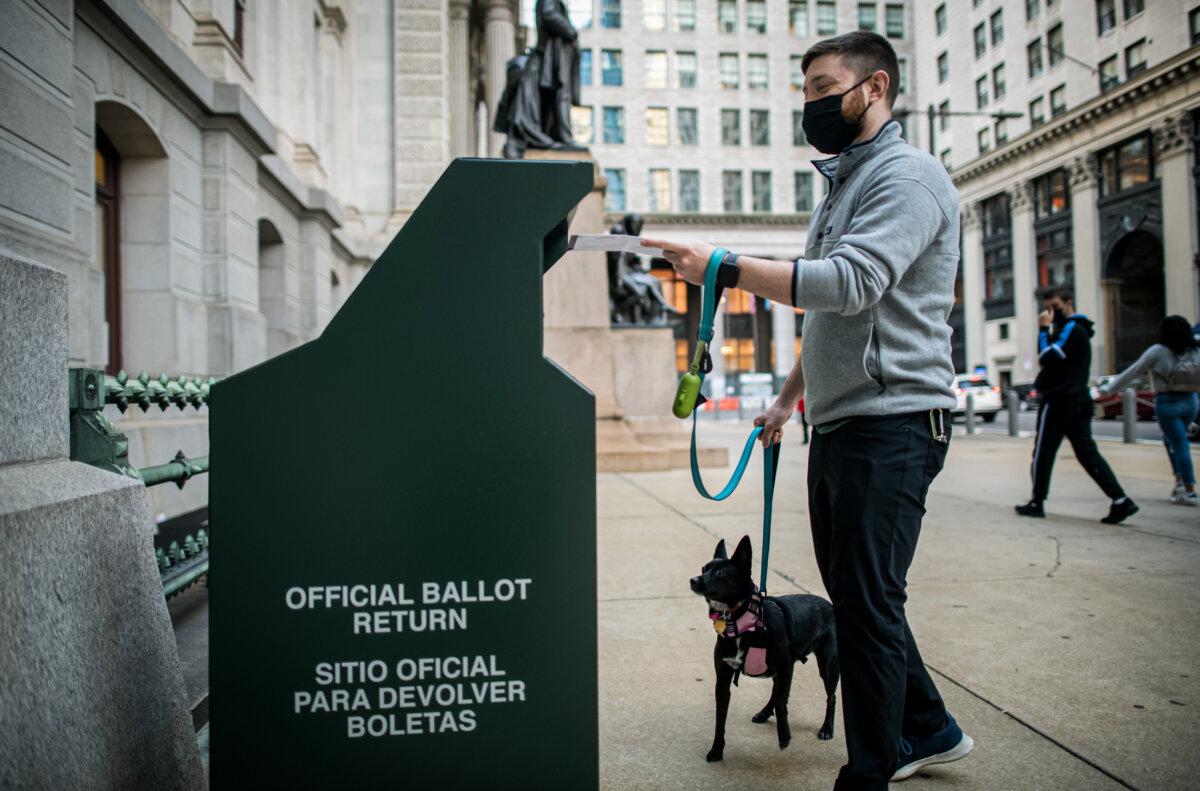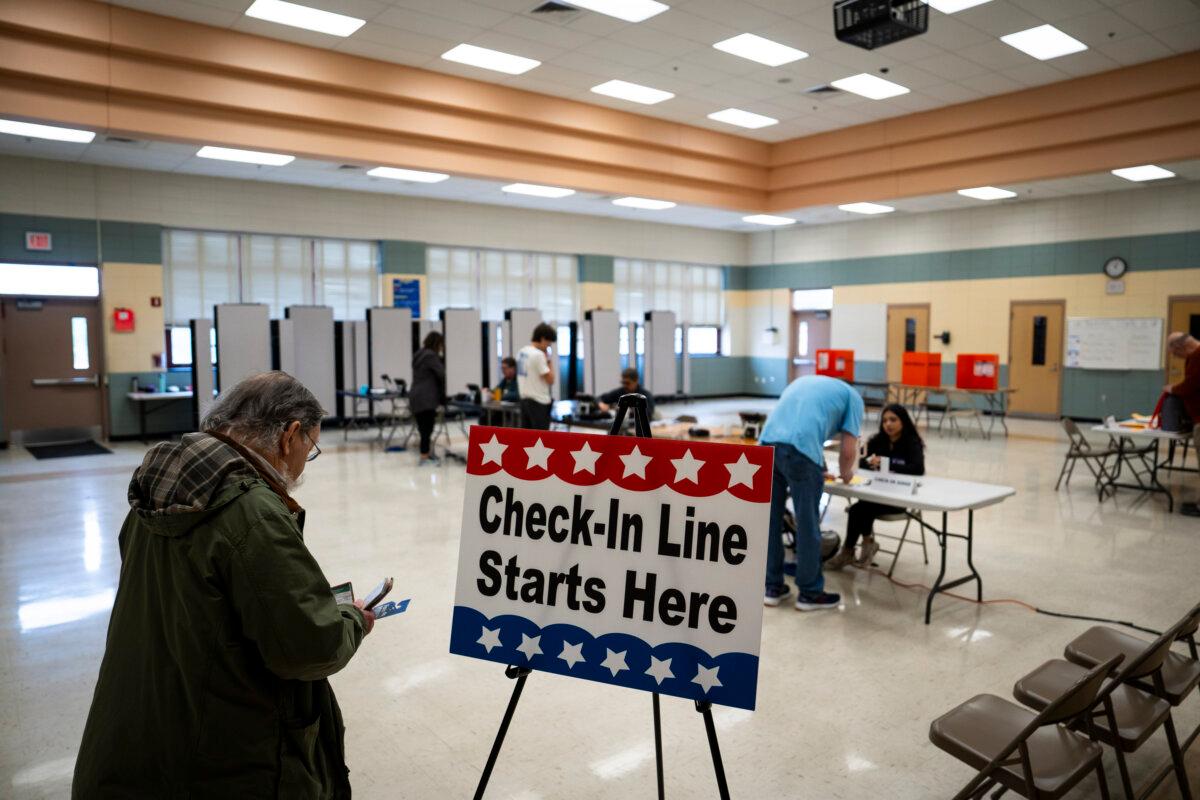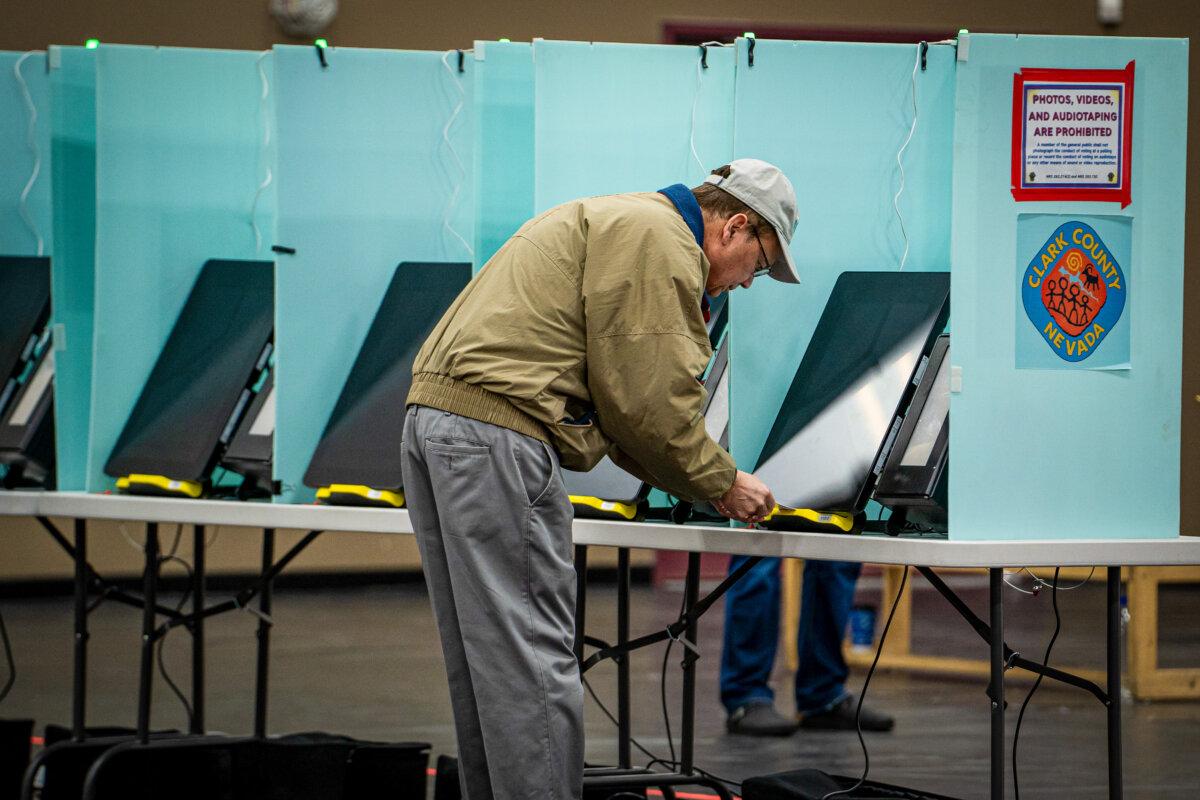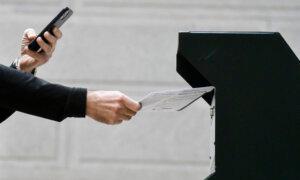The timeline could stretch days after Election Day based on how each state regulates late mail-in ballots.
Laws dictating how late mail-in ballots can be accepted differ from state to state. In some of the 2024 swing states, the timeline could stretch days after Election Day, Nov. 5, based on when ballots are accepted, processed, and counted.
Here are some dates and laws to keep in mind.
In Nevada, mailed ballots can be accepted as late as four days later, by 5 p.m. on Nov. 9, if they are postmarked no later than Election Day under state law.
Ballots that arrive days after Election Day with unclear postmarked dates are also acceptable by Nevada law.
State and national Republicans challenged the post-Election Day ballot acceptance standard through a lawsuit. A judge dismissed the case in July, saying the plaintiffs did not have standing.
Nevada stands in stark contrast to North Carolina and most other battleground states.

North Carolina Gov. Roy Cooper looks on during an NBA game at Spectrum Center in Charlotte, N.C., on April 7, 2022. Jacob Kupferman/Getty Images
The Commonwealth of Pennsylvania and Wisconsin set an 8 p.m. deadline for receipt of mailed absentee ballots.
Ballot Processing, Tallying
Most of the battleground states let officials start processing mail-in and absentee ballots before Election Day, sometimes even weeks ahead of time—reducing the workload on Election Day and potentially speeding up the arrival of results.
Pennsylvania and Wisconsin are exceptions.
Canvassing of additional absentee ballots must commence by the third day after Election Day and, for military ballots received, “shall continue through the eighth day following the election.”
Between Nov. 5 and Nov. 25, candidates could launch various challenges to results.

A voter casts his early ballot at a drop box outside of City Hall on Oct. 17, 2020, in Philadelphia, Pennsylvania. Mark Makela/Getty Images
On Sept. 13, Pennsylvania’s Supreme Court ruled against counting inaccurately dated mail ballots.
The release or possession of early results is a class 6 felony in the state, which could potentially translate to a prison sentence.
The deadline for Arizona’s official canvass of results is Nov. 25, 2024.
Arizona is notorious for taking a long time to count all its ballots.
Additional processing steps begin at 8 a.m. on the third Monday before Election Day, when verified and accepted ballots are opened and scanned. Those ballots are counted starting at 7 a.m. on Election Day.

A voter waits in the check-in line at a voting site during the primary election in Elkridge, Md., on May 14, 2024. Madalina Vasiliu/The Epoch Times
Smaller jurisdictions can rely on such a board to start the processing and tabulation of such ballots the day before Election Day.
Otherwise, absentee ballots can start being counted at 7 a.m. on Election Day.
In Nevada, mail ballot signatures are verified upon receipt.

A person votes in the primary election at the Desert Breeze Community Center in Spring Valley, Nev., on Feb. 6, 2024. Madalina Vasiliu/The Epoch Times
Original News Source Link – Epoch Times
Running For Office? Conservative Campaign Consulting – Election Day Strategies!


